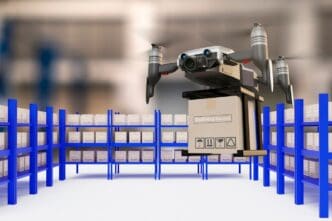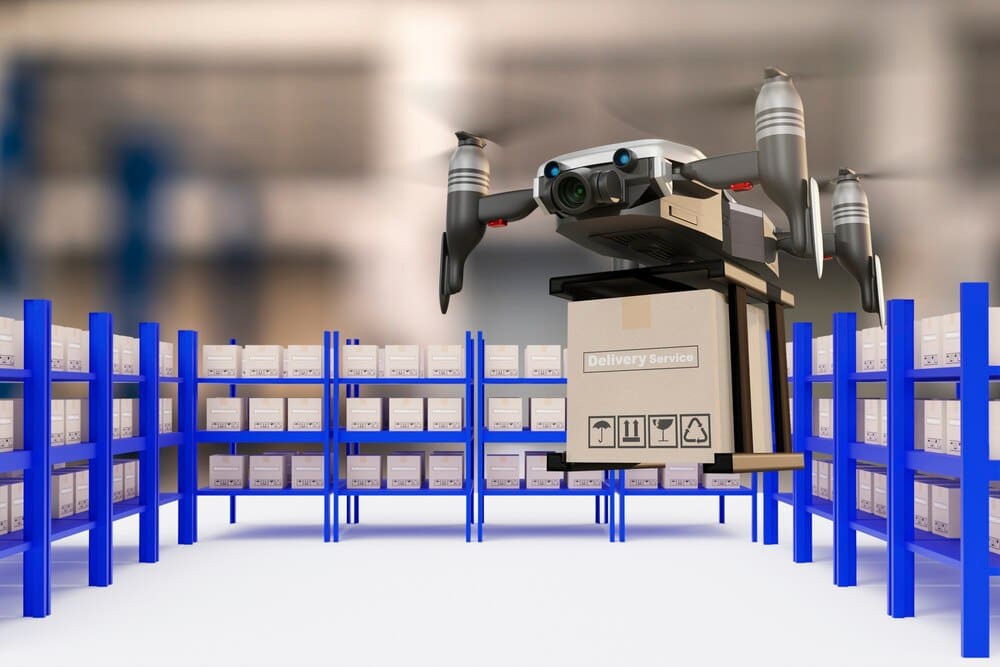Global businesses are increasingly turning to Artificial Intelligence to navigate the unprecedented volatility and complexity of modern supply chains. By leveraging AI and machine learning, companies are moving beyond reactive problem-solving to proactively predict demand, optimize logistics in real-time, and build resilient networks that can withstand disruption. This technological shift, happening now across industries from retail to manufacturing, allows organizations to slash operational costs, meet soaring customer expectations for speed and transparency, and secure a decisive competitive advantage in a marketplace where efficiency is paramount.
The Modern Supply Chain: A Complex Web Ripe for Disruption
For decades, supply chain management has been a delicate balancing act. Professionals have relied on historical data, established methodologies like Just-in-Time (JIT), and a fair amount of intuition to move goods from raw material to end consumer. This traditional model, however, is increasingly fragile in the face of modern challenges.
Today’s supply chains are not linear chains but intricate, global webs. A single product can involve dozens of suppliers, manufacturers, and logistics partners across multiple continents. This complexity creates informational silos, where one part of the network has little visibility into the operations of another, making it nearly impossible to get a holistic, real-time view of operations.
Recent years have exposed the vulnerabilities of this system. The COVID-19 pandemic, geopolitical conflicts, trade disputes, and extreme weather events have demonstrated how quickly a single point of failure can cascade, leading to massive delays, empty shelves, and skyrocketing costs. Businesses can no longer afford to simply react to these events; they must learn to anticipate and adapt to them.
This is precisely where Artificial Intelligence enters the picture. AI provides the analytical power to process vast, complex datasets from across the supply network, identify patterns invisible to the human eye, and generate predictive insights. It transforms the supply chain from a series of disjointed, reactive steps into an integrated, intelligent, and predictive ecosystem.
Core AI Applications Transforming Logistics
AI is not a single, monolithic solution but rather a collection of powerful tools that can be applied to specific pain points within the supply chain. From forecasting to final delivery, these applications are fundamentally changing how goods are managed and moved around the world.
Predictive Demand Forecasting
Perhaps the most impactful application of AI in the supply chain is in demand forecasting. Traditional methods often rely on historical sales data alone, making them poor predictors in volatile markets. AI-powered forecasting models, however, are far more sophisticated.
These machine learning algorithms analyze not only historical sales but also a wide array of external variables. This can include weather patterns, competitor pricing, marketing campaigns, economic indicators, and even real-time social media sentiment. By identifying subtle correlations between these factors and consumer demand, AI can generate forecasts with a much higher degree of accuracy.
The result is a dramatic improvement in inventory management. Businesses can avoid costly overstocking situations that tie up capital and warehouse space, while also minimizing stockouts that lead to lost sales and customer dissatisfaction. For example, a beverage company can use AI to predict a surge in demand for sports drinks in a specific city by correlating local event schedules with weather forecasts, ensuring shelves are stocked just in time.
Intelligent Warehouse and Inventory Management
The modern warehouse is rapidly evolving from a static storage facility into a dynamic, tech-enabled hub. AI is the engine driving this transformation. AI-powered Warehouse Management Systems (WMS) optimize every facet of operations, from slotting—determining the most efficient storage location for each item—to orchestrating the flow of goods.
Autonomous Mobile Robots (AMRs) navigate warehouse floors to transport goods, bringing shelves to human workers to minimize travel time and accelerate the picking process. Furthermore, computer vision systems, essentially AI-powered cameras, can monitor production lines for quality control, count inventory with near-perfect accuracy in seconds, and ensure loading dock efficiency and safety.
This infusion of intelligence reduces human error, increases throughput, and provides a real-time, granular view of inventory levels. It allows warehouses to operate with greater speed and precision, which is critical for meeting the demands of e-commerce and same-day delivery.
Dynamic Route Optimization
For logistics fleets, fuel and time are the two most significant costs. AI-driven route optimization tools offer a powerful way to minimize both. While older systems could plan a static route based on a list of stops, modern AI algorithms perform dynamic optimization.
These systems process real-time data on traffic conditions, weather, road closures, and even specific delivery time windows for each customer. The algorithm continuously recalculates the most efficient path for every vehicle in a fleet throughout the day. If an accident causes a traffic jam, the system can automatically reroute a driver to avoid the delay.
Companies like UPS have famously used this technology for years with systems like ORION (On-Road Integrated Optimization and Navigation). By shaving just a few miles off each driver’s route per day, the cumulative savings in fuel, maintenance, and emissions are enormous, translating to hundreds of millions of dollars annually.
Predictive Maintenance for Fleet and Machinery
Unexpected equipment failure is a primary cause of disruption in both logistics and manufacturing. A broken-down delivery truck or a malfunctioning conveyor belt can bring operations to a halt, causing costly delays. AI-powered predictive maintenance shifts the paradigm from reactive repairs to proactive care.
By placing IoT (Internet of Things) sensors on vehicles, forklifts, and factory machinery, companies can collect continuous data on performance, temperature, vibration, and other key health indicators. This data is fed into a machine learning model that learns the normal operating parameters of each asset. The AI can then detect subtle anomalies that signal an impending failure, alerting maintenance teams to service the equipment before it breaks down.
This approach maximizes uptime, extends the lifespan of expensive assets, and reduces overall maintenance costs by avoiding emergency repairs and collateral damage from catastrophic failures.
Getting Started: A Practical Roadmap for AI Implementation
Adopting AI can seem daunting, but a strategic, phased approach can make the process manageable and ensure a strong return on investment. The journey begins not with technology, but with a clear business objective.
1. Start with a Clear Business Problem
The most successful AI initiatives are those that target a specific, high-value business problem. Instead of pursuing “AI for AI’s sake,” leaders should ask: Where are our biggest costs? What are our most frequent points of failure? Are we struggling with inaccurate forecasts, high shipping expenses, or warehouse inefficiencies? Focusing on a defined pain point creates a clear goal and makes it easier to measure success.
2. Unify and Cleanse Your Data
AI is fundamentally data-driven. Its insights are only as reliable as the data it is trained on. Many organizations suffer from data silos, where critical information is locked away in separate, incompatible systems (e.g., ERP, WMS, TMS). The first technical step is to create a unified data strategy, breaking down these silos and ensuring data is clean, accurate, and accessible.
3. Begin with a Pilot Project
Rather than attempting a massive, enterprise-wide overhaul, start with a focused pilot project. Choose one area identified in the first step—such as route optimization for a single distribution center or demand forecasting for a specific product line. A successful pilot serves as a proof-of-concept, demonstrates tangible ROI to stakeholders, and provides valuable lessons for a broader rollout.
4. Choose the Right Technology Partner
Few companies have the in-house expertise to build complex AI systems from scratch. Fortunately, the market for AI-powered logistics solutions is mature. Businesses can choose from a wide range of Software-as-a-Service (SaaS) providers specializing in everything from forecasting to fleet management. The key is to select a partner whose technology integrates well with existing systems and who understands the specific challenges of your industry.
5. Foster an AI-Ready Culture
Technology is only half the battle. Successfully integrating AI requires a cultural shift. It is crucial to address employee concerns, emphasizing that AI is a tool to augment human capabilities, not replace them. Training is essential to help staff understand how to work alongside these new systems, interpret their outputs, and leverage AI insights to make better, faster decisions.
The Future is Autonomous
The integration of AI into the supply chain is an ongoing evolution. Looking ahead, the trend points toward greater autonomy. We are on the cusp of seeing more widespread use of self-driving trucks for long-haul routes and delivery drones for the last mile. The “lights-out” warehouse, operating almost entirely with robotics and AI, is already a reality in some advanced facilities.
Generative AI is also poised to play a major role in complex scenario planning. It will allow supply chain managers to ask complex questions like, “What are the five most resilient sourcing strategies if a major typhoon hits Southeast Asia during peak season?” The AI could then simulate thousands of outcomes and recommend an optimal, data-backed plan.
Ultimately, AI is no longer a futuristic luxury but a foundational element of modern supply chain management. By embracing its power to predict, optimize, and automate, businesses can build the intelligent, agile, and resilient operations necessary to not only survive but thrive in an increasingly complex and unpredictable world. The competitive advantages gained by early adopters will only compound over time, making the decision to invest in AI a strategic imperative for growth.








